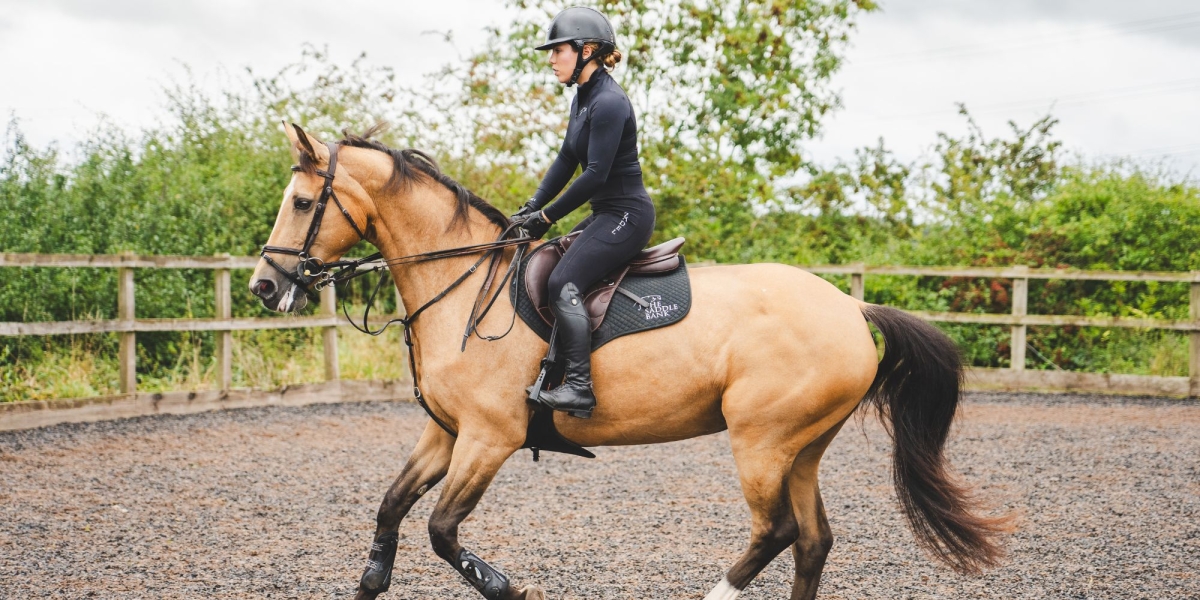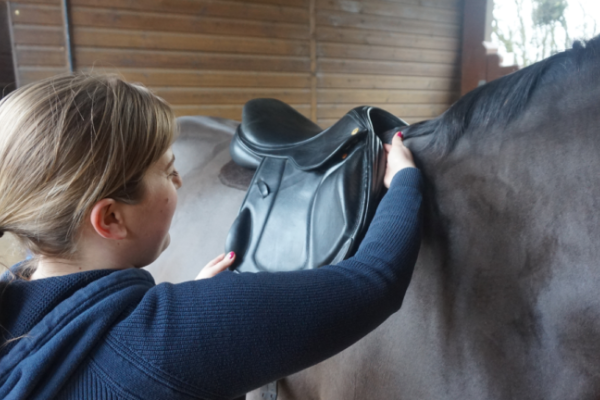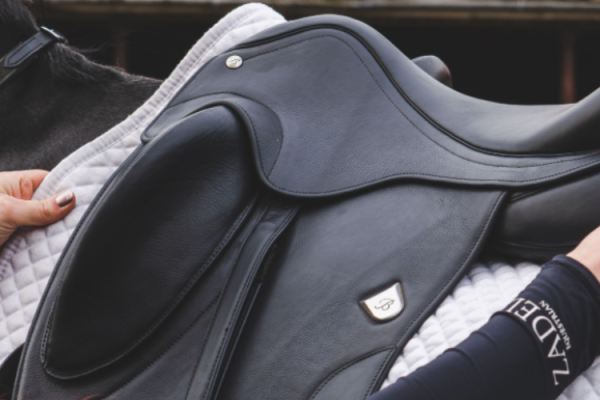All about Stud Girths
In this article we will discuss all about stud girths, what they are and who would use one. This blog should help give you an insight into whether a stud girth is right for you and your horse.
If you are unfamiliar with stud girths, you may have noticed them on a horse without even realising what they are. If you are among this demographic, Team Saddle Bank are here to explain what they are, why you might use one, and where to find one! Stud girths are easy to spot as they are much broader than a standard girth and cover a larger area of the horse’s underside. Stud girths are normally made in a shape that somewhat almost mimics a smaller, flat saddle underneath the horse. They are designed to have an ergonomic shape to comfortably sit around the contours of the horse’s body.
If you are still a bit confused about which saddle or any saddle related product is best for you why not get in touch with our friendly customer support team. Via phone on 01733 301 488or email [email protected]. Our lovely team are always happy to help as much as they can and provide you with the information you need to make the best decision for you and your horse.
When is a stud girth used?
Stud girths are primarily used in jumping and cross country on horses that have studs in their shoes. Horses’ shoes can be fitted with metal studs, much like you would find on football boots. This is give better traction at high speeds over jumps and round corners. However, the introduction of the spikes means that the horse might be at risk of injury when they pick their front legs up to go over a jump. Which could result in the studs hitting the horse’s underside.
The purpose of the stud girth is foremost to protect the horse’s underside from this impact, but many people prefer to use them even if the horse does not have studs fitted. This can save their horse’s underside from getting clipped by a hoof or shoe when they fold their legs beneath them to jump. Horses are sensitive creatures, and it could take just one incident of a horse kicking itself to be put off jumping.
A stud girth can be a great preventative measure against such injuries. Many avid stud girth users will agree that you only have to look at the marks left on the girth after a few uses. Or to hear that “thud” as a horse tucks their legs under and kicks the girth to know that the girth is serving its purpose. After all, it’s better the horse is kicking the girth than themselves! We know that you want the best for your equine friends. So if you feel your horse may benefit from this added protection, we can help you find a great solution.

When should a stud girth not be used?
Though thoroughly beneficial to horses while jumping, you may not always require a stud girth. Particularly during dressage and showing, a stud girth may be considered non-standard tack. The Saddle Bank always encourage you to check with the show or competition organisers. Different organisers may have their own rules around the use of stud girths – it’s better to check beforehand than to be caught out. Stud girths are available in most lengths to be able to both suit monoflap and dual flap saddles.
Some saddles may require specialist girths, and for these a stud girth may not be best suited. Many equestrians may be put off using a stud girth if they have a sensitive horse. However there are many material options or covers available. Which would be suitable for horses that may be prone to rubbing or discomfort in this area. You will likely be able to find an option to suit most horses.
How to use a stud girth?
Stud girths do vary depending on the brand and model. However generally they can be used much in the exact same way you would use a standard girth. The most important difference between using a standard girth and a stud girth is to make sure it is the correct way around! With the side which has more material towards the hind quarters. Many stud girths have d-rings or clips at the ‘front’ side of the girth so that you can attach a martingale or training aids.
Once your saddle is in the correct position, fasten the girth underneath the horse to the billets on your saddle loosely at first. So that you can adjust to the correct tension evenly on both sides. Certain girths may take time to wear in; take your time to make sure that your horse is comfortable, and your saddle is safely secured in place before mounting and check again once you are mounted. You may even find it beneficial to check again after you have warmed up.
As with any girth we would always recommend you use a stud girth that either has elastic on both sides or no elastic at all as this can cause the saddle to slip or put uneven pressure on your horse's back.

What stud girths are most popular?
The best stud girth will largely depend on your horse. Team Saddle Bank recommend checking with a qualified saddle fitter to be certain which would work best to suit you and your horse. However, many highly popular saddle manufacturers are now offering them.
Stud girths that may be worth having a look at
The Arena Stud Girth is an affordable, durable and lightweight stud girth available here from The Saddle Bank, it features an extreme cut away behind your horse's elbows to allow them the freedom to move with their full range of movement both galloping a cross the country and whilst jumping. The Arena stud girth also features one central lie-flat D ring for martingale and breastplate attachment and two additional side D-rings.
If we haven't got the Arena Stud girth in stock in the size or colour you need please let us know on 01733 301488 or [email protected] and we can get this ordered for you!
Voltaire Design have a great range of stud girths which perfectly match their saddles. It is available in both long or short options for both dual and monoflap saddles. As well as either no elastic or elastic on both sides.
High-end performance saddle manufacturer CWD have also formulated a product called “Mademoiselle anatomic jumping belly guard girth”. Which is their own take on a stud girth. This girth oozes all the quality and class for which CWD are best known. As well as being carefully designed to allow for optimum performance and freedom of movement for the horse.
For the LeMieux fans among us, the LeMieux “Gel -Tek Anatomic Curve Stud Girth” features a special gel beneath the leather exterior. Which helps to evenly distribute pressure around the horse for maximum comfort.
The Scharf “freedom” stud girth has come into the spotlight in recent years. With perhaps the least typical ‘look’ of girth on the list, its unique design is centred around the horses breathing and freedom of elbow movement. While still boasting the same strength in structure needed to safely secure the saddle to your horse. At around £330 for a Scharf short stud girth, they may not be the most economical choice.












